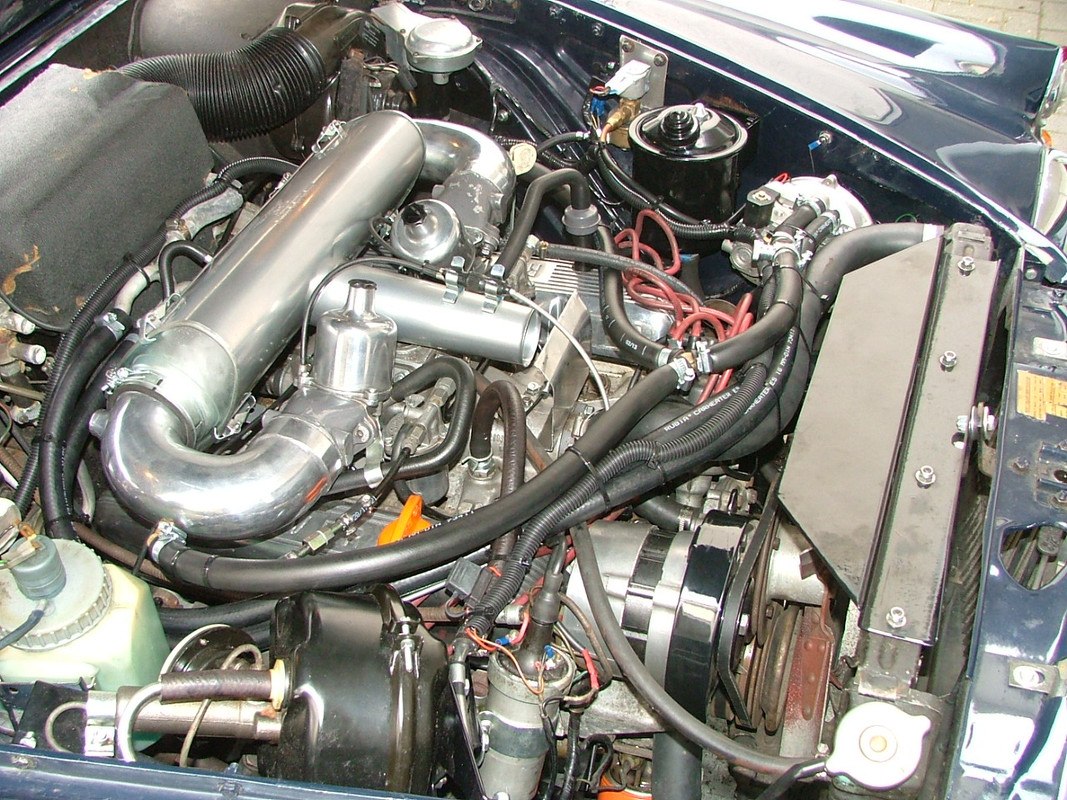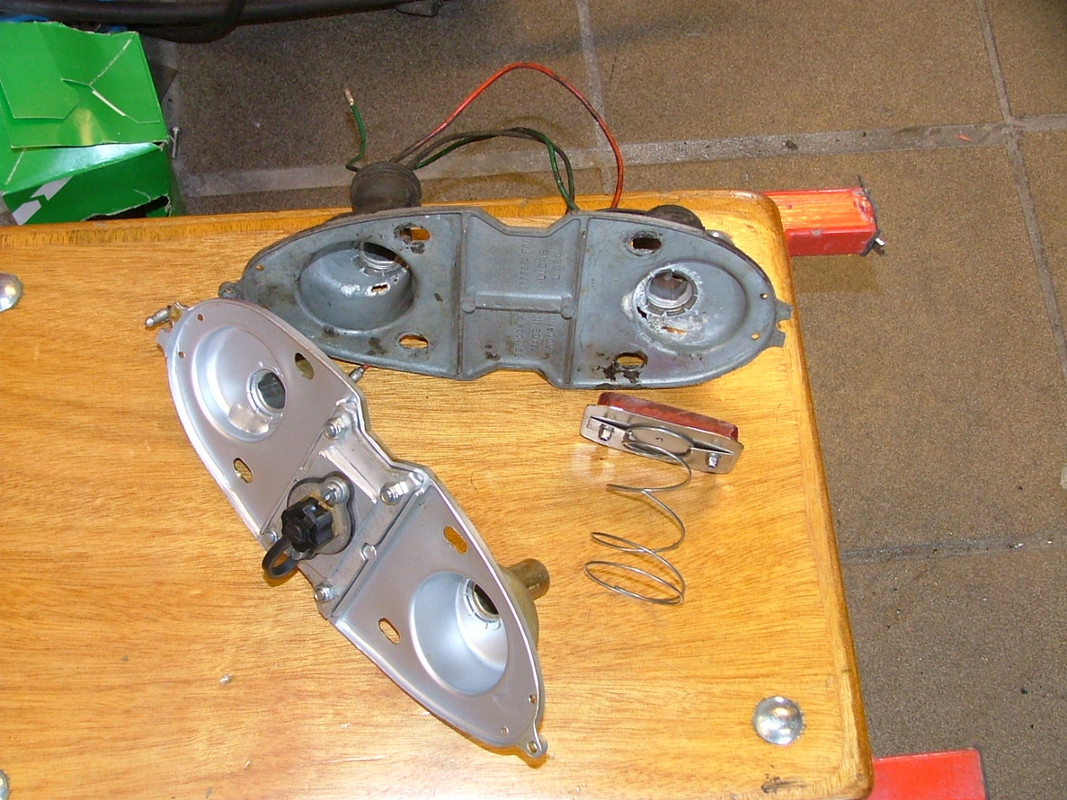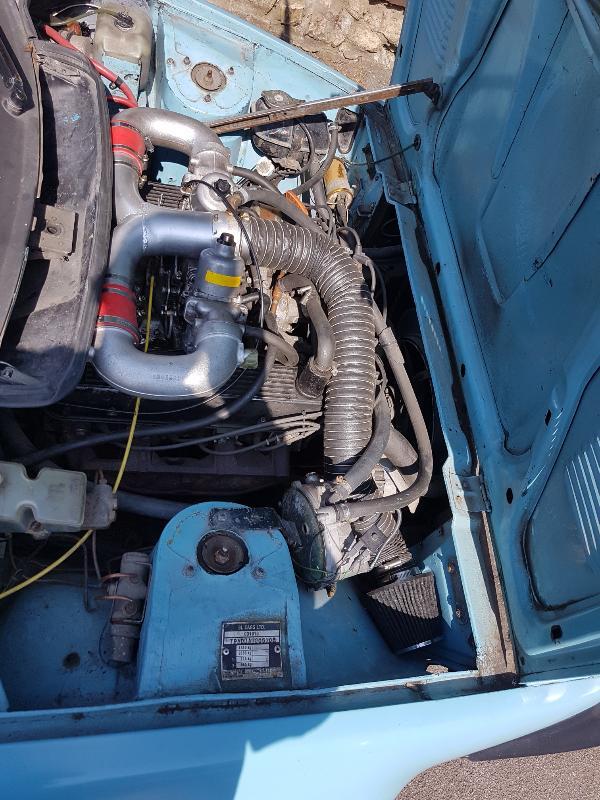|
|
|
May 10, 2018 10:12:20 GMT
|
|
Hi all,
Wondering if some clever person can help me.
I currently run a 1963 rover p4 as a daily driver and love it. My dad is also away to get rid of his mercedes ml320 with Lpg.
I'm thinking it would be quite novel and very cost effective to transfer the system from the mercedes into my rover.
Is this going to be difficult to do? I understand that i need to get a few bits and get rid of some offer bits but i can work round that. But whatsapp is actually involved?
I understand how an Lpg system works on a car aswell however am unsure of how it works in joining to the carburettor.
And help would be most appreciated.
Cheers
-Kyle
(p.s i have read many threads and if you answer to this is don't do it cos its illegal etc. I politely ask you to keep it to yourself. I understand the legalities and certificates and do have a plan to go forward with that sude of things)
|
| |
|
|
|
|
|
|
|
May 10, 2018 13:30:13 GMT
|
i run a Rover P5B on LPG as my daily driver. Here in holland LPG is more common then in the UK, The engine needs to have hardened valve seats which are standard on the V8 Its rather simple in combination with a carburator. With the system i have, the car is being started on LPG. Some systems start the car on petrol and switch over to LPG. starting on LPG never causes problems, even when the temperature are below 0 I believe your P4 has a mechanical fuel pump. Its better to fit an electrical one which can be switched off when you run the car on LPG. The Rover P5B has elbows between carburator and air filter and on my car the diffusers are sinply fitted in these elbows.  On above picture you can spot the evaporator on the LH inner wing and the cut off valve on the inner wing behind the black PAS reservoir However you can also fit the diffusers in the SU connection piece behind the carburator as can be seen in the picture underneath  Then it needs some electrical work to fit the swith needed for switching from LPG to petrol and this switch also has 5 LEDs for the LPG fuel level. LPG fuel lines can be cupper or plastic I fitted the the filling nipple behind the reflector in one of the rear lights as i did not want to drill holes in the rear wing.  the car has a bit less power on LPG but with the V8 its not a problem Peter |
| |
Last Edit: May 10, 2018 13:35:32 GMT by petervdv
|
|
|
|
|
May 10, 2018 17:51:56 GMT
|
|
Hi Peter,
Thank you for a very informative post. I must say a very nice car as well.
I should be ok to pretty much go ahead with the conversion as the 2.6 straight 6 in the 110 p4 already has hardened valve seats and also an electric fuel pump.
So in theory I can mount a tank in the boot/spare wheel well. Run the pipework under the car to a vaporiser in the engine bay then run the pipe work to a diffuser in the opening of the carb. Have I missed anything major? (other than petrol cut outs and filters etc.)
Also what size tank does your p5 have for lpg and what range/mpg do you achieve.
All the best
Kyle
|
| |
|
|
|
|
|
May 10, 2018 18:34:23 GMT
|
|
Hi Kyl,
Between the tank and the vaporiser there is this valve which is also connected with a kind of inertia device in the fuel/lpg switch and this closes the valve in case of an accident. This valve has a build in filter. On my LPG tank there is an additional valve which is closed when the ignition is switched off.
I do not think you missed something. I am currently restoring another P5B and fitted the LPG myself and this was not difficult.
I have a 60 liter tank in my daily P5B which is filled up for 80% and this has gives me a range of approx. 225km. On petrol its 10% better
Peter
|
| |
|
|
|
|
|
May 10, 2018 18:34:40 GMT
|
|
Hi Kyle,
Between the tank and the vaporiser there is this valve which is also connected with a kind of inertia device in the fuel/lpg switch and this closes the valve in case of an accident. This valve has a build in filter. On my LPG tank there is an additional valve which is closed when the ignition is switched off.
I do not think you missed something. I am currently restoring another P5B and fitted the LPG myself and this was not difficult.
I have a 60 liter tank in my daily P5B which is filled up for 80% and this has gives me a range of approx. 225km. On petrol its 10% better
Peter
|
| |
Last Edit: May 10, 2018 18:34:53 GMT by petervdv
|
|
|
|
|
May 10, 2018 18:47:47 GMT
|
Hi, there will be virtually nothing from the ML system that you can fit to your Rover, the ML should have an injection system, whereas your Rover just needs a mixer type system. About all you could use is the tank and filler point. The pipework isnt transferable really, the vapouriser/ reducer will be for an injection system as will be the changeover switch. You would be better selling the ML as an LPG vehicle assuming its up and running and then buying a decent DIY kit from someone like TinleyTech to fit the rover. You can either use a crude gas ring type mixer as in the pictures above or fit a BLOS lpg carb, which is like an old SU carb for gas. I would recommend the BLOS but it does need the adjustments setting up carefully by somebody who know what they are doing. No disrespect to the other poster but a well setup rover V8 can make just as much power on gas as petrol (at the expense of running not quite as well on petrol should you ever need it) - if there is a noticable difference between the 2 fuels something isn't quite right with either the specification of the conversion that has been fitted or the set up of it, that comes from over 20 years of running Range Rovers on gas. As a guide I did a similar instal in one of my vehicle using a new BLOS and 2nd hand twin tanks for under £200 excluding the cost of my labour. You always want to fit the biggest possible tank you can, multiple tanks can be connected for a better fit in limited space or to increase range, my daily holds 144l from empty to 80% fill, nothing worse than having only 150 miles range and having to go from filling point to filling point. Lots of information and help available on the lpg discussion forum www.lpgforum.co.uk including helpful professional installers who are familiar with older vehicles. You used to be able the download the LPGA code of practise COP 2 with their information about tank and filler fixing, filler point locations, pipework routing (ie not next to or above the exhaust or exhaust manifold) etc etc. |
| |
Last Edit: May 10, 2018 18:52:28 GMT by dodgerover
|
|
|
|
|
May 10, 2018 19:12:18 GMT
|
|
I did not realize the Merc had fuel injection....
On my Rover the ignition was not adjusted so that may cause a little loss of power but it makes it easy to switch over to petrol.
Interesting feature this BLOS. Were your Range Rovers fuel injected or in case of carbs 2x BLOS are needed?
Peter
|
| |
|
|
|
|
|
May 10, 2018 20:09:22 GMT
|
|
You can get away with using 1 blos (they're rated upto somewhere around 180hp) but it's a faff on carbs it's easier to use 2 to keep the inlet tract short. With the injection version it's easy to do with 1.
The first rangie we got (and still have) is actually now a 3.5 carb'd bottom end running flat plate mixers along with skimmed late 10 bolt heads from a 3.9 or 4.2 and a cam for the injection model. The ignition timing is set for running best on lpg - it has always started from cold on lpg even in the uk winter so never really gets run on petrol, but it will do so but needs super unleaded as the timing is too advanced otherwise. It was originally converted to gas in the 80s, we got it in the mid 90s and it worked hard for another 10 years of daily use and a lot of heavy towing. We re ground the valves once when we got it and they needed doing again after maybe 60,000 miles, oddly when we replaced the original heads after another 50000 miles the valves were still fine. I think it may have had a set of piston rings and bearing shells but can't be certain.
Other range rovers have come and gone in the mean time - all converted to gas - but we kept that one.
|
| |
|
|
|
|
|
May 10, 2018 23:11:25 GMT
|
|
Thanks for the info. Will start to improve the LPG system once the restoration of my other Rover is completed. Have seen the flat plate mixers but it all needs some mods when the original air filter set is used. Also thinking about fitting a AFR metering system to monitor the set up
Peter
|
| |
|
|
|
|
|
May 11, 2018 21:59:07 GMT
|
|
I have both a efi range rover and tr7v8 on carbs both with LPG.
The rr is on a blos system with omvl r90 vaporizer and runs very well, the tr on the same vaporizer with the carbs linked and a single plate mixer, I have recently fitted this because I struggled to get an even mixture with twin plate mixers fed from the single vaporizer. It runs much more smoothly now but the restriction does affect the power on both fuels eventually I will fit a blos as well.
Lpg has 85% of the energy of petrol so like for like it will always be a bit down on power, it does have a high octane rating though so can make better use of supercharging, more advanced timing and higer compression ratios.
|
| |
|
|
|
|
|
|
|
May 11, 2018 22:05:29 GMT
|
, the tr on the same vaporizer with the carbs linked and a single plate mixer, I have recently fitted this because I struggled to get an even mixture with twin plate mixers fed from the single vaporizer. It runs much more smoothly now but the restriction does affect the power on both fuels eventually I will fit a blos as well. Do you have a picture of this? I have the same vaporizer but have never seen a Rover V8 with a single plate mixer. Thanks in advance Peter |
| |
|
|
|
|
|
|
|
|
If doing similar based on my previous experiences of LPG I would use a standalone injector ECU (low end Megasquirt or similar) and install it as injection rather than mixer (even single point injection should be ok), you lose less power and mpg this way when used on a modern car and compared to an old carb setup you may actually lose no power at all and in fact get better power across most of the RPM range (I don't mean peak power tho as that will be down simply due to the lower calorific value for LPG, timing can help but you will always be a bit less unless forced induction with more pressure to get more A\F in the chamber) and economy due to being able to accurately fuel compared to carb (i'm not 100% sure but I think you can add a vacuum to the SU's to keep the piston fully open all the time when on LPG using injection).
|
| |
|
|
LowStandards
Club Retro Rides Member
Club Retro Rides Member 231
Posts: 2,713
|
|
|
|
|
I'm just going to throw it in here that the 2.6 is a pretty awful engine and for the cost of fitting even a second hand lpg kit you could buy a decent engine from something newer and reap the bettererererer fuel economies and powerz!
|
| |
|
|
|
|
|
May 17, 2018 11:17:00 GMT
|
If doing similar based on my previous experiences of LPG I would use a standalone injector ECU (low end Megasquirt or similar) and install it as injection rather than mixer (even single point injection should be ok), you lose less power and mpg this way when used on a modern car and compared to an old carb setup you may actually lose no power at all and in fact get better power across most of the RPM range (I don't mean peak power tho as that will be down simply due to the lower calorific value for LPG, timing can help but you will always be a bit less unless forced induction with more pressure to get more A\F in the chamber) and economy due to being able to accurately fuel compared to carb (i'm not 100% sure but I think you can add a vacuum to the SU's to keep the piston fully open all the time when on LPG using injection). no doubt a fully electronic system is the best system available but the amount of work and cost is going to be much much more, you've got to drill and tap the manifold for the injectors, fit a hego, tps and map sensor, wire it all up and then it will need mapping. I have found the Blos is a good compromise between 2, the affordable and easy to fit and far better control than a single point. On my RRC v8 auto I get around 14 mpg on lpg and 16 on petrol, performance is a little bit down but not enough to notice during normal driving. The early SU's with external breathers through the cap for the dampers can be lifted using a vacuum, not so easy on the HS's which have an internal breather. I'll take some pics of the TR at the weekend. |
| |
|
|
|
|
|
May 17, 2018 12:26:11 GMT
|
I'm just going to throw it in here that the 2.6 is a pretty awful engine and for the cost of fitting even a second hand lpg kit you could buy a decent engine from something newer and reap the bettererererer fuel economies and powerz! Hi, They are not a 'pretty awful engine' they are just an old engine with it's own design limitations and are just about as efficient as it can be. At the time as the model age progressed all power increases were obtained by compression ratio increases to utilise the better fuel being made available. During and after the war Britain was running on pool petrol which even into the mid 50's rarely had an octane rating higher than 75. Rover did try improving it through other methods, like fitting more carbs but the gains didn't justify the extra cost. They were smooth, quiet and reliable with a long service life, capable of 200k+ when lesser engines of the time would need work at 50k. Having said all that you're right, if you want modern performance then fit a modern engine. All that's being asked here is about changing the type of fuel. Sorry for the rant!! Colin |
| |
Last Edit: May 17, 2018 13:28:50 GMT by colnerov
|
|
|
|
|
May 17, 2018 17:14:46 GMT
|
I'll take some pics of the TR at the weekend. thanks |
| |
|
|
|
|
|
May 21, 2018 13:49:08 GMT
|
Here is the pic of the TR installation, mixer is in the centre between the carbs, vapouriser and air cleaner behind the rh headlamp, eventually I plan to box the air cleaner in so it draws air from the wheelarch.  |
| |
|
|
|
|
|
May 21, 2018 20:43:27 GMT
|
|
Thanks! That looks good. Looks like the Y shaped pipe is made out a pair of elbows.
Peter
|
| |
|
|
|
|
|
May 22, 2018 10:58:03 GMT
|
|
I did think about using 2 elbows but it's actually a off the shelf exhaust pipe.
|
| |
|
|











